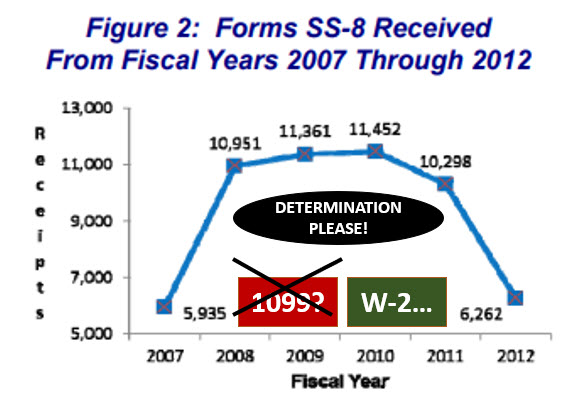
Employment Law Update: It’s Way More Than 1099 v W-2!
If you missed my last post, it now includes “worker misclassification.” There are a lot of people with a lot of opinions. That may be all they are, opinions of mortgage business owners and employees all over social media. Need I remind everyone, regulators LOVE social media posts!
Employment law and compliance will hit many businesses this year and is gaining traction. What started out in California with AB5 is now spreading across the country. Why now?
In addition to California doing what California does, one reason may be that the I.R.S and the D.O.L began working together, (yes, together) when they issued a Memorandum of Understanding back in 2011. Apparently, that wasn’t enough! In February 2018, they issued a report titled; Additional Actions Are Needed to Make the Worker Misclassification Initiative With the Department of Labor a Success. Do I have your attention?
In addition to that mess, the U.S. Department of Labor also summarized more than 180 federal laws covering “workplace activities.” And this is just on a FEDERAL level. The states are happy to have a whole other set of laws.
Here is a recap of just some employment laws passed by or through Congress that ALL businesses must comply with:
- Internal Reveue Service and Department of Labor – these rules cover how “workers” are classified for federal tax purposes and employee protections. If you really want to know, the IRS would be happy to make a determination if you file a Form SS8.
- National Labor Relations Act of 1935 —covers union and non-union employees and was enacted by Congress to ” protect the rights of employees and employers and to curtail certain private sector labor and management practices, which can harm the general welfare of workers, businesses and the U.S. economy. “
- Fair Labor Standards Act of 1938 — generally requires the payment of statutorily prescribed minimum wages to all covered employees except certain younger workers, who may be paid a sub-minimum training wage for up to 180 days. It also requires employers to pay overtime to all non-exempt employees at 1 1/2 times the employee’s regular rate for all hours worked in excess of 40 per week. Note: On December 12, 2019, the U.S. Department of Labor announced a Final Rule that will allow employers to more easily offer perks and benefits to their employees. www.dol.gov/agencies/whd/overtime/2019-regular-rate.
- Employment at-will doctrine —refers to an employment agreement stating that employment is for an indefinite period of time and may be terminated either by employer or employee. If an employment is at-will, such an agreement would typically be expressly included in an employment contract. Absent an individual employment contract, the employer is free to discharge an employee at any time with or without cause.
- Equal Pay Act of 1963— requires that male and female workers receive equal pay for work performed under similar working conditions and requiring equal skill, effort and responsibility.
- Title VII of the Civil Rights Act of 1964 —employers with 15 or more employees are prohibited from refusing to hire, discharging or otherwise discriminating against any individual in terms and conditions of employment because of race, color, religion, sex (including pregnancy) or national origin. Many state and local governments have mandated additional protected classifications, such as marital status, AIDS and sexual orientation.
- Age Discrimination in Employment Act of 1967 — prohibits private employers with 20 or more employees from discharging or otherwise discriminating on the basis of age against employees who are age 40 or older.
- Immigration Reform and Control Act of 1986— this makes it unlawful for an employer to hire anyone who is not legally authorized to work in the United States. All employers, regardless of size, must verify the identity and eligibility of employment of every new employee hired.
- Americans with Disabilities Act of 1990 — prohibits private employers with 15 or more employees from discriminating against employees or applicants with disabilities.
- Family and Medical Leave Act of 1993 — prohibits employers with 50 or more workers from discriminating against or interfering with employees for exercising their rights to leave under the act.
- USERRA of 1994 – establishes rights and responsibilities for uniformed service members and their civilian employers.
TAKE AWAY? Is it time for your company to do a top-down review? I know, the compliance department is already reeling from everything going on, but maybe it’s time to stop and take stock of what should have been known and complied with from the day your business opened. Kudos to you and your company if you are doing everything 100% compliantly!
Feedback welcome! Contact: deb@cloes.online (866-256-3766)


